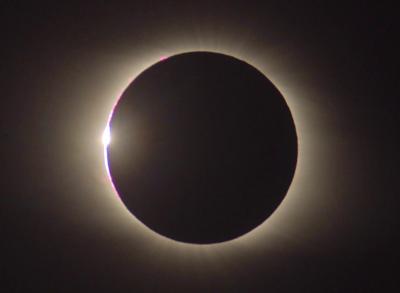Archives
Change at the helm of the Variable Star Section
The Variable Star Section Officers gathered on 2019 Aug 10 for Roger Pickard’s final Officers’ meeting, before he stood down
Read moreTotal Solar Eclipse, 2019 Jul 2 : An Argentinian adventure
The centre of the 2019 Jul 2 total solar eclipse umbra first touched the Earth’s surface at 18:02 UTC in
Read moreAlmach: a triple star once more
The beautiful double star Almach, or γ (gamma) Andromedae, is one of the great telescopic sights of the October skies
Read moreFrom the President
National Astronomy Meeting July saw the National Astronomy Meeting take place in Lancaster. Known by the acronym NAM, it is
Read moreSky Notes: 2019 August & September
Brian highlights some impressive Globular Clusters and galaxies for these Sky Notes
Read more
